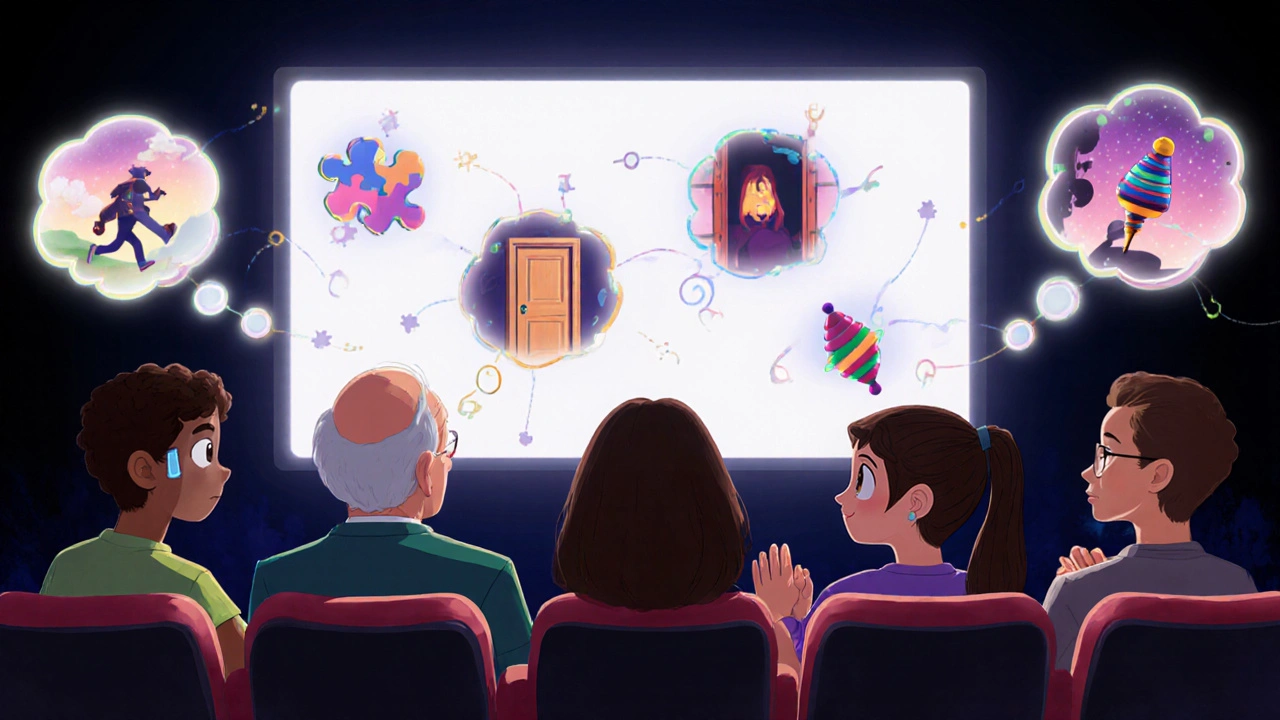Film Perception: How Movies Shape What We See and Feel
When you watch a movie, your brain doesn’t just process what’s on screen—it film perception, the way viewers interpret, feel, and assign meaning to moving images and sound. Also known as cinematic interpretation, it’s what turns a simple shot of a rain-soaked street into a feeling of loneliness, or a close-up of trembling hands into raw fear. This isn’t magic. It’s design. Every cut, color, sound, and silence is chosen to guide your mind, often without you realizing it.
Behind every powerful moment in film is film semiotics, the study of signs and symbols that create meaning beyond the story. A red coat in a black-and-white film isn’t just clothing—it’s a signal. A distant engine hum isn’t just noise—it’s dread. These aren’t random choices. Filmmakers use visual and auditory signs—like visual storytelling, the practice of conveying emotion and narrative through images rather than dialogue—to pull you into the world. Think of the way Agnès Varda used everyday objects to tell deep personal stories, or how Ridley Scott built entire worlds with lighting and texture so you felt the grit before a word was spoken. These aren’t just techniques. They’re tools that shape how you experience truth in fiction.
And then there’s the emotional side. Why do some scenes make you cry without a single line of dialogue? Why does a simple glance from an actor feel heavier than a monologue? That’s emotional response in film, the psychological and physiological reaction viewers have to cinematic cues. It’s not about big moments. It’s about the quiet ones: the way a camera lingers too long, the sound of a door clicking shut, the shift in music that doesn’t swell—it just fades. These details trigger memory, association, and feeling. They’re why a shot from The Lord of the Rings can make you feel like you’ve lost something, even if you never set foot in Middle-earth.
What you’re seeing isn’t just a movie. It’s a carefully built experience. Every post here digs into how that experience works—from the sound of a punch that feels real without ever hitting skin, to how a rom-com heroine’s evolution mirrors real social change. You’ll find breakdowns of how directors manipulate perception, how symbols carry weight, and why some films stay with you for years while others vanish by morning. This isn’t theory for academics. It’s the hidden code behind every scene you’ve ever felt in your bones. And now, you’re about to see it clearly.
Cognitive film theory explains how viewers actively build stories and feel real emotions from movies using universal mental processes. Learn how perception, memory, and empathy shape your movie experience.
View More

